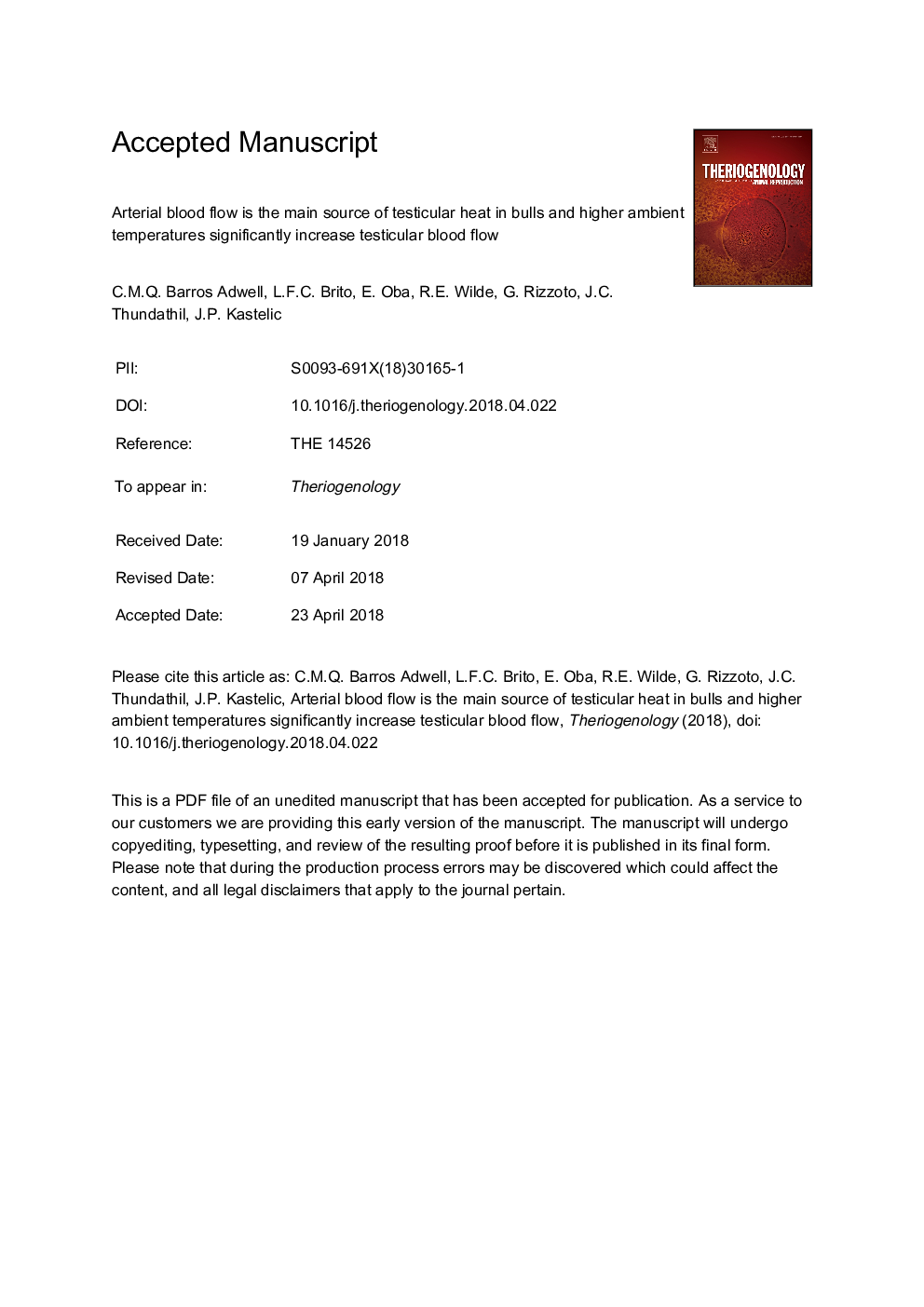| Article ID | Journal | Published Year | Pages | File Type |
|---|---|---|---|---|
| 8426581 | Theriogenology | 2018 | 21 Pages |
Abstract
Two experiments were done in bulls to determine: total testicular blood flow, testis oxygenation and heat, and effects of ambient temperature on testicular temperatures and blood flow. In Experiment 1, arterial blood flow to testes and testicular oxygenation and heat were determined in Angus bulls (nâ¯=â¯8). Blood temperature and hemoglobin O2 saturation were both greater (Pâ¯<â¯0.0001) in the testicular artery than in the testicular vein (39.2â¯Â±â¯0.2 vs 36.9â¯Â±â¯0.4â¯Â°C and 95.3â¯Â±â¯0.7 vs 42.0â¯Â±â¯5.8%, respectively; meanâ¯Â±â¯SEM). Based on testicular blood flow of 12.4â¯Â±â¯1.1â¯mL/min and an arterial-venous temperature differential of 2.3â¯Â°C, blood contributed 28.3â¯Â±â¯5.1â¯cal/min of heat to the testis, whereas heat produced by testicular metabolism was estimated at 5.8â¯Â±â¯0.8â¯cal/min (based on O2 consumption of 1.2â¯Â±â¯0.2â¯mL/min). In Experiment 2, effects of three ambient temperatures (5, 15 and 35â¯Â°C) on testicular blood flow and temperatures were determined in 20 Angus bulls. At 35 versus 5â¯Â°C, there was greater testicular blood flow (8.2â¯Â±â¯0.9 versus 4.9â¯Â±â¯0.7â¯mL/min/100â¯g of testicular tissue, Pâ¯<â¯0.05), and higher scrotal subcutaneous and intratesticular temperatures (Pâ¯<â¯0.01). In conclusion, arterial blood flow was the main source of testicular heat, testes were close to hypoxia, and increased ambient temperature significantly increased scrotal subcutaneous and intratesticular temperatures, as well as testicular blood flow. These studies gave new insights into scrotal/testicular thermoregulation in bulls; they confirmed that testes are nearly hypoxic, but challenged the long-standing paradigm that testicular blood flow does not increase when testes become warmer.
Keywords
Related Topics
Life Sciences
Agricultural and Biological Sciences
Animal Science and Zoology
Authors
C.M.Q. Barros Adwell, L.F.C. Brito, E. Oba, R.E. Wilde, G. Rizzoto, J.C. Thundathil, J.P. Kastelic,
